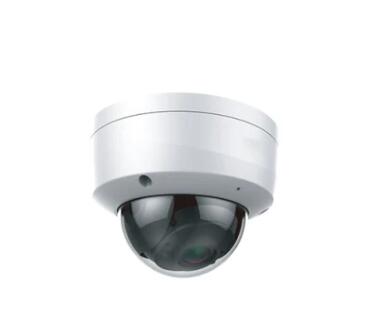The Intelligent Watch: Exploring the Impact of AI Advancements on Surveillance Capabilities
2023-12-05
Introduction:
In the realm of surveillance, the integration of artificial intelligence (AI) has ushered in a new era of capabilities that were once confined to the realm of science fiction. The synergy between AI and surveillance technologies has paved the way for unprecedented levels of efficiency, accuracy, and adaptability. In this blog post, we will delve into the transformative impact of AI advancements on surveillance capabilities, exploring the ways in which intelligent algorithms are reshaping the landscape of monitoring and security.
1. Facial Recognition:
- Precision in Identification:
- AI-driven facial recognition systems have vastly improved the precision and speed with which individuals can be identified. This technology enables real-time matching against databases, aiding in the rapid identification of persons of interest.
- Enhanced Security Measures:
- The use of facial recognition enhances security measures by providing an additional layer of authentication. Access control systems and surveillance networks can leverage AI to permit or deny entry based on recognized faces.
2. Behavior Analysis:
- Anomaly Detection:
- AI algorithms can analyze patterns of behavior within surveillance footage, identifying anomalies that may indicate potential security threats. This includes unusual movements, abandoned objects, or activities outside of normal parameters.
- Predictive Analytics:
- Through the analysis of historical data, AI-powered surveillance systems can predict and anticipate certain behaviors. This predictive analytics approach allows for proactive security measures to be implemented, mitigating risks before they escalate.
3. Object Recognition:
- Identification of Objects:
- AI has greatly improved the ability to identify and track objects within surveillance footage. This includes the recognition of vehicles, weapons, or specific items of interest, enabling a more granular analysis of the visual data.
- Automated Alerts:
- Surveillance systems equipped with object recognition capabilities can generate automated alerts based on identified objects. This facilitates rapid response times in scenarios where immediate action is required.
4. Smart Monitoring and Alerts:
- Event-Based Alerts:
- AI-driven surveillance can distinguish between routine activities and events that require attention. This event-based alert system reduces the need for constant human monitoring and allows security personnel to focus on critical situations.
- Integration with IoT Devices:
- Integration with Internet of Things (IoT) devices enhances smart monitoring. AI can analyze data from diverse sources, such as sensors and connected devices, providing a comprehensive understanding of the monitored environment.
5. Automated Tracking and Navigation:
- Target Tracking:
- AI algorithms enable automated tracking of targets within a surveillance area. This can be particularly useful in scenarios where monitoring a moving subject is crucial, such as in public spaces or high-security facilities.
- Autonomous Navigation:
- Some AI-powered surveillance systems can autonomously navigate and reposition cameras to focus on specific areas of interest. This dynamic adaptability ensures that the surveillance network is optimized for effective monitoring.
Conclusion:
The marriage of artificial intelligence and surveillance technologies has given rise to a new era of intelligent monitoring. As AI continues to advance, the capabilities of surveillance systems will evolve, offering enhanced security, operational efficiency, and adaptability. However, with these advancements come ethical considerations and the need for responsible deployment to ensure that the benefits of AI-powered surveillance are balanced with respect for privacy and adherence to ethical standards. The intelligent watch, guided by AI algorithms, is shaping the future of surveillance, transforming the way we approach security and monitoring in our increasingly interconnected world.



